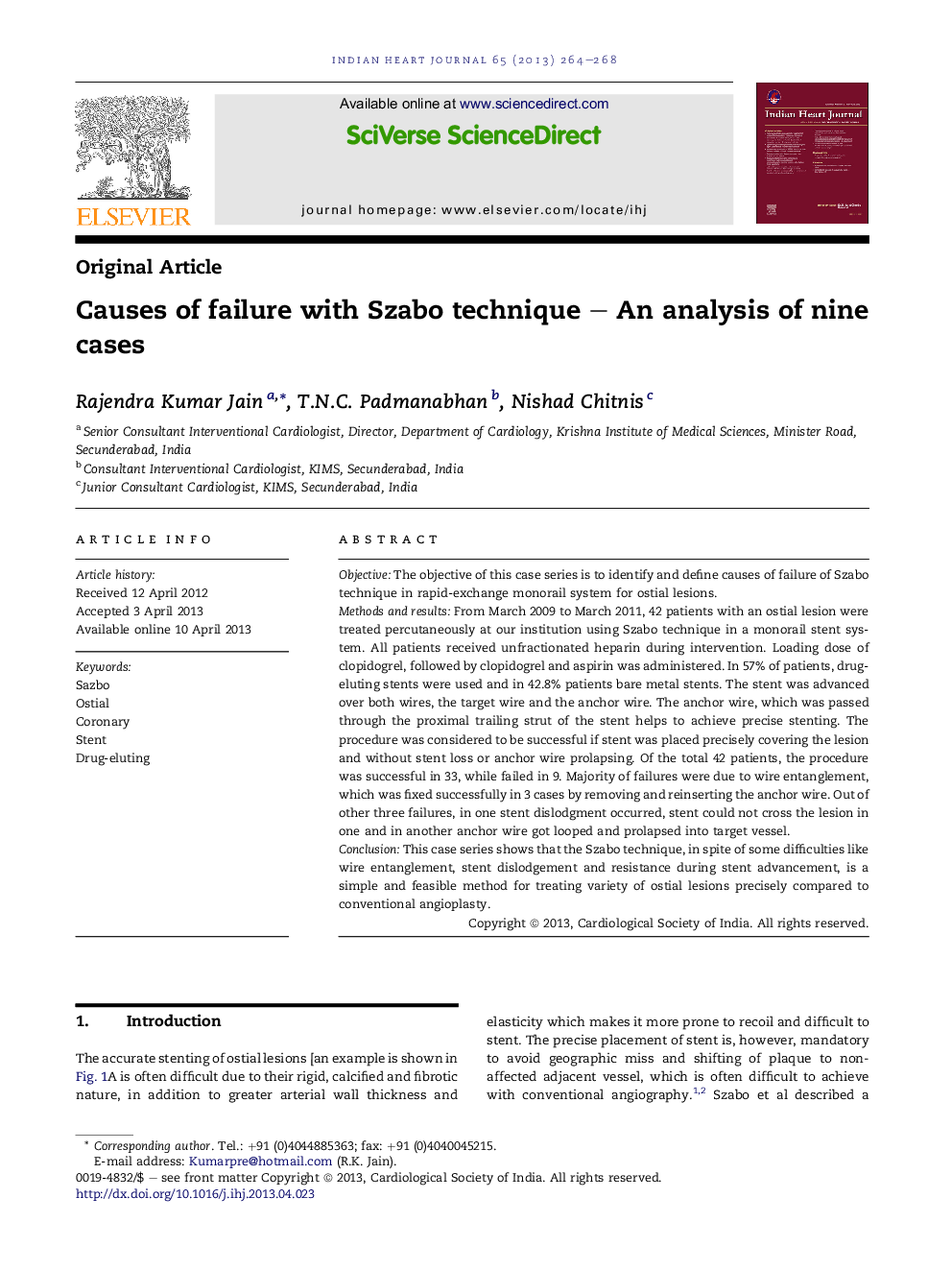| Article ID | Journal | Published Year | Pages | File Type |
|---|---|---|---|---|
| 2927817 | Indian Heart Journal | 2013 | 5 Pages |
ObjectiveThe objective of this case series is to identify and define causes of failure of Szabo technique in rapid-exchange monorail system for ostial lesions.Methods and resultsFrom March 2009 to March 2011, 42 patients with an ostial lesion were treated percutaneously at our institution using Szabo technique in a monorail stent system. All patients received unfractionated heparin during intervention. Loading dose of clopidogrel, followed by clopidogrel and aspirin was administered. In 57% of patients, drug-eluting stents were used and in 42.8% patients bare metal stents. The stent was advanced over both wires, the target wire and the anchor wire. The anchor wire, which was passed through the proximal trailing strut of the stent helps to achieve precise stenting. The procedure was considered to be successful if stent was placed precisely covering the lesion and without stent loss or anchor wire prolapsing. Of the total 42 patients, the procedure was successful in 33, while failed in 9. Majority of failures were due to wire entanglement, which was fixed successfully in 3 cases by removing and reinserting the anchor wire. Out of other three failures, in one stent dislodgment occurred, stent could not cross the lesion in one and in another anchor wire got looped and prolapsed into target vessel.ConclusionThis case series shows that the Szabo technique, in spite of some difficulties like wire entanglement, stent dislodgement and resistance during stent advancement, is a simple and feasible method for treating variety of ostial lesions precisely compared to conventional angioplasty.
